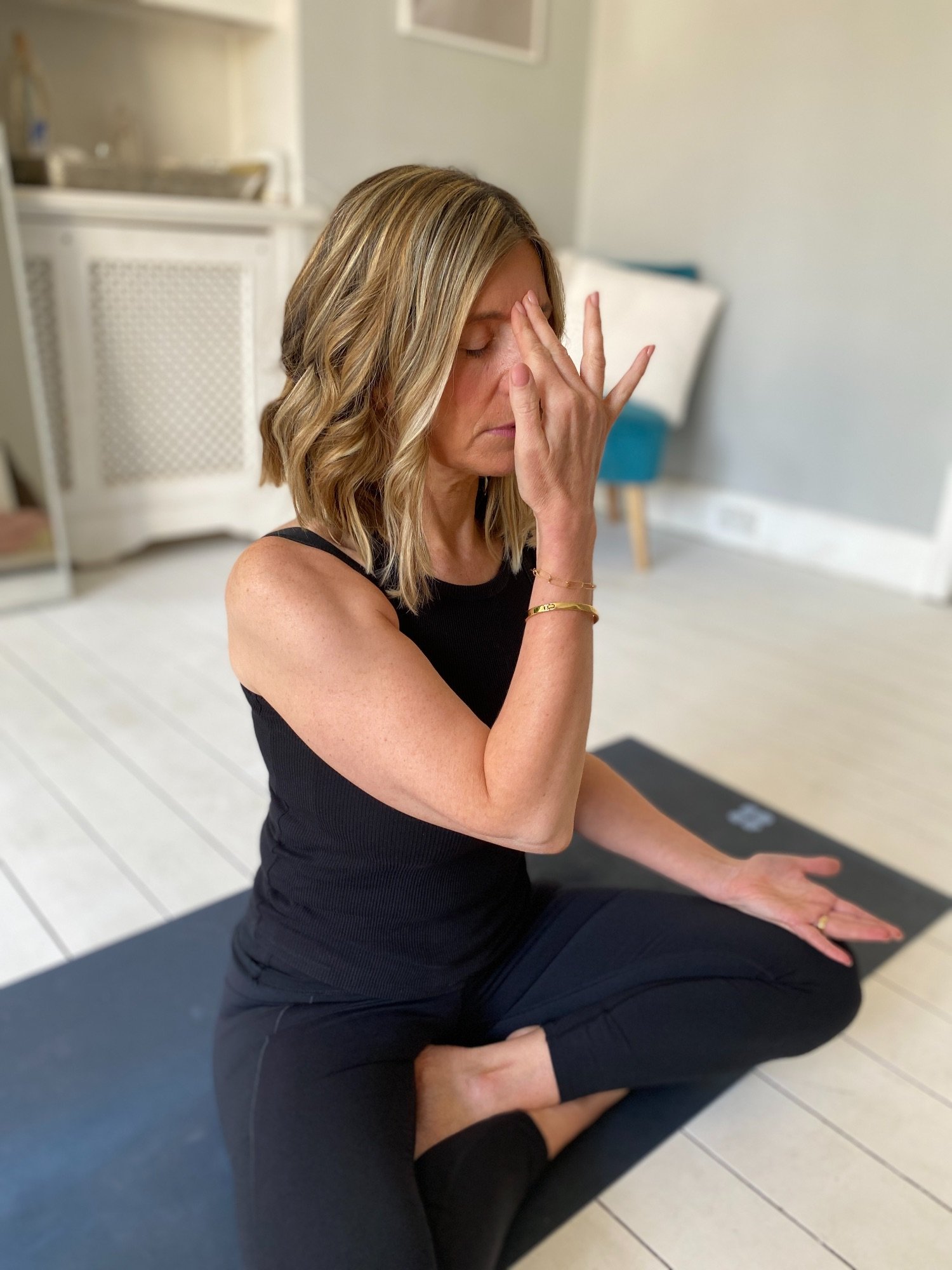MINDFULNESS
Mindfulness practice
A particular feature of all of my Yoga classes has always been a short, breath-based mindfulness practice. The word “mindfulness” has entered the zeitgeist, we know that even MPs at Westminster practise mindfulness, but what does it actually mean?
At its most basic, mindfulness means to be present and in the moment, to be here right now. In this way, we can experience life as it unfolds rather than missing it because we are caught up in the past or the future.
It is also a way of resting the mind in its natural state of calm and tranquillity. Mindfulness fosters an awareness that, whatever else may be going on in our life, there is a place within of stillness and calm. Our contemporary life is so busy and we have so many demands upon our time and energy that we may well have forgotten this.

A simple practice in a complex world
So, at the start of every class, I will spend a short period of time working with different breathbased techniques to develop the skill of mindfulness. I am passionate about this as a tool to help people cope with the stresses of modern day life. My work references the Mindfulness-Based Stress Reduction Program (MBSR), one of the most studied and successful forms of meditation in the West as propagated by Jon Kabatt-Zinn. The science backs this up and mindfulness has been used to treat a wide range of stress-related symptoms including chronic anxiety, depression, addiction, insomnia and OCD.
Often people are aware of the benefits of mindfulness but find it hard to do it on their own. This is why practising with others can be so helpful and another reason I have made it such an important feature of my Yoga classes.
The key benefits of mindfulness
At a glance, these are the key benefits of mindfulness:
• An effective tool for dealing with stress
• A way to control negative thought patterns
• Helps restore the mind to a calm and peaceful state
• Lowers levels of anger
• Reduces levels of the stress hormone, cortisol
• Helps foster a feeling of calm
• Teaches relaxation techniques to help with insomnia
• A useful tool to help manage anxiety
• Helps treat addiction
• Can manage and help treat OCD
• Offers a way of coping with panic attacks
• Helps treat depression
• Improves mood
• Instils a sense of hope
Would you like to enjoy the benefits of mindfulness?
I am happy to teach the techniques of mindfulness either one-on-one or in a small group. Please
contact me below for further details.
Mindfulness & gratitude practice
In my Yoga classes, I will often use love and gratitude as my class theme. A gratitude practice with a focus on the heart centre can be particularly powerful. It simply involves saying a silent thank you for all the people, places and experiences that bring joy to, and enrich, our life as opposed to those things that deplete our energy and cause us to suffer.
Expressing gratitude is an important part of mindfulness and its practice can be deeply empowering. If we commit to doing it regularly, it can shift our perspective to the extent that we begin to see our life in a completely different way, moving us out of the "I'll be happy when" state to the "I am grateful for ......" state. In fact, studies have shown that practising gratitude on a regular basis can have a long-term, very positive effect on our mental and emotional well-being and help to allay depression and anxiety
A Simple Gratitude Meditation
Begin by lying down with your legs extended or your knees bent if that feels more comfortable for your back. Place your hands over the centre of your chest (where it is believed the energetic heart centre resides). Next connect with your breath and begin to observe the rising and falling of your chest as you breathe in and out. Now pause for a moment. When the mind wanders, guide it gently back to the breath and to the movement of the breath in the body.
Then, when you are ready, gently call to mind everything in your life that fills you with joy and gratitude - your god, your partner, your children, your grandchildren, your parents, your grandparents, your siblings, your wider family, close friends, good neighbours, supportive colleagues, the health-care professionals who take care of you, your teachers and guides, your pets, your home, spending time in Nature, beautiful places you love to visit, hobbies and activities that enrich your life - anything and everything that fills your heart with pleasure and joy. Again, pause for a moment.

As you continue to focus on these things, you may begin to feel warm, calm and content. You are now said to be in a state of gratitude. Stay with this awareness for some time in your own quiet space. And then, when you are ready, gently release from this awareness. Take a moment to consider how you feel. If appropriate, make a commitment to practise gratitude often. Remember on those occasions when you don't have time for a full gratitude meditation, just saying a heartfelt thank you at the end of your Yoga practice can make a difference. Try it and see.
